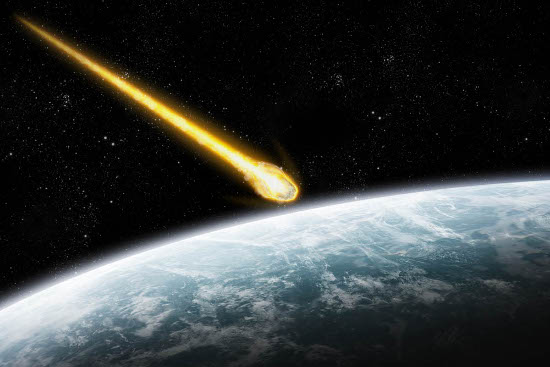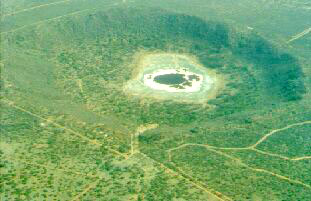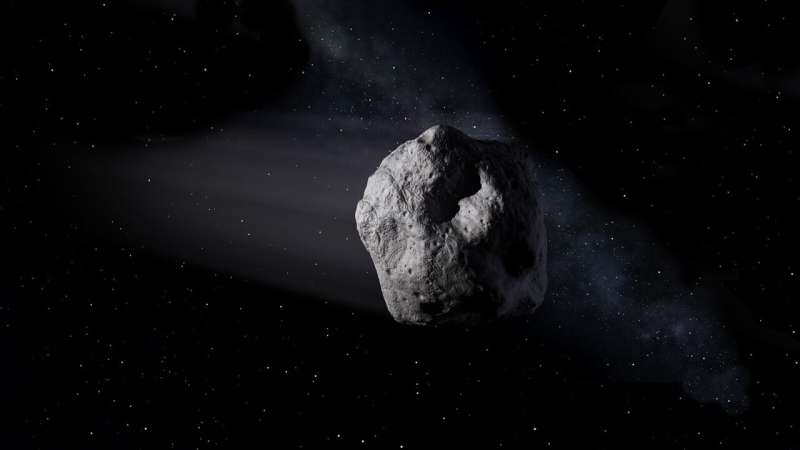
ATLAS will be keeping an eye on that spot in the sky. In the hope of discovering more asteroids that might strike the Earth on the same day, astronomers tried looking back along the approach direction of 2008 TC3 but did not detect anything. The timing coincidence may herald the beginning of a new annual meteor shower on October 8. That it occurred almost exactly one year before the Indonesian event described above means that the Earth was passing through the same position in space as when it was struck a year earlier. A story in the New Scientist describes the expedition that recovered fragments of the meteorite. Their final prediction was accurate to 1km and 1.5sec. Within a few hours they knew where it would land within 100km and when it would land to within 20 seconds. It's an amazing story because of the hard work and quick wit of Kowalski and the Catalina Sky Survey, the way the Minor Planet Center coordinated hundredsof observations by amateurs and professionals over the next 20 hours, and the astounding accuracy with which scientists at JPL were able to predict the eventual impact. The asteroid is estimated at about 2-3 meters (7-10 ft) diameter and the impact released about 1-2kton of energy over a barren area in Sudan.
#Tunguska meteoroid full#
This asteroid, 2008 TC3, was discovered by Richard Kowalski of the Catalina Sky Survey and the full story is at the JPL NEO website. On October 7, 2008, for the first time an asteroid was discovered before it hit the Earth. Indonesia 2009 - 5-10m (15-35 ft) diameter impactor

The Chelyabinsk event ranks as the largest impact recorded on Earth since the Tunguska fireball above Siberia in 1908 ( see below) that released an estimated energy equivalent to 10 megatons of TNT and destroyed hundreds of square miles. reported the explosion produced a powerful shock wave that raced around the world twice and was detected by 20 worldwide monitoring stations designed to detect ultra-low frequency sound waves emanating from nuclear test explosions. A study published in the June 9 Geophysical Research Letters by Pichon et al.

17-meter diameter space rock had an estimated energy of 460 kilotons of TNT – equivalent to about 30 atomic bombs of the kind dropped on Hiroshima during World War II. Had it arrived at Earth at a slightly different time or angle it could have hit Moscow, Belfast, Dublin or any number of other cities with latitude similar to that of Chelyabinsk. Flying glass injured hundreds of people on their way to work. Debris rained across the city causing several small craters and punching a large hole in an ice slab covering a nearby lake. a 10,000-ton asteroid exploded 23 kilometers (14 miles) above the ground near the Russian city of Chelybinsk in the Ural Mountains sending a shock wave that damaged buildings and shattered windows. The meteor streaking through the sky aboveĬhelyabinsk, Russia on February 15, 2013.

Chesapeake Crater - 35 million years agoĬhelyabinsk, Russia 2013 - 17-20 m (55-65 feet) diameter impactor.

There are, however, recognized impacts and we list some of them below ranging from events within the past few years, to large explosions that occurred in the past century, to huge explosions while humans were present on Earth, to global catastrophes eons ago. Scientists head to Greenland, Antarctica, Australia, and other deserts, which are exceptionally good places to find them. Weather and vegetation rapidly erase evidence of small impact craters and degrade or bury the meteorites. Since most of the Earth's surface is ocean or far from human habitation, most impacts are not observed. Most are very small: gravel- or baseball-sized rocks that burn up entering the atmosphere, leaving only their burnt dust to float down and increase the mass of the Earth by tens of thousands of tons every year. We now understand that impacts occur constantly. Until the 18th century, European academics simply did not believe that stones could fall from the sky and skepticism persisted even into the 19th century. Asteroid impacts dramatic enough to notice are rare.


 0 kommentar(er)
0 kommentar(er)
